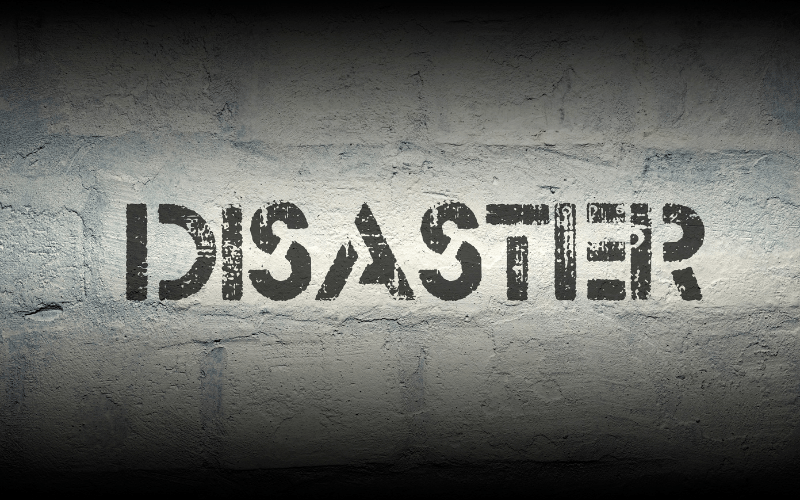Exploring the Intersection of EMDR and Play Therapy
By Ann Beckley-Forest, LCSW-R, RPT-S
***Originally published in March 2019 Go With That Magazine™️ issue “EMDR With Children & Adolescents.“***
American psychologist, educator, and founder of EMDR, Francine Shapiro’s adaptive information processing (AIP) model proposes that the integration of both positive and negative experiences into our nervous system is the healthy process by which we grow. When an acutely negative or traumatic event occurs, our own neurobiological effort to cope with the trauma sabotages this information processing by isolating the related associations, images, feelings, etc. (Shapiro, 2017).
EMDR’s potency in entering this isolated memory network and enabling the client to begin the adaptive process of integration is well established. In the field, professionals are now looking into the intriguing question of how EMDR does its work and, often the more complicated question, how can EMDR professionals best get each client to do it?
Making safe therapeutic space for the activation and the adaptive processing of traumatic memories has long been a central theme in play therapy literature.
Basis for Integration
Since the field’s earliest days, practitioners have attempted to extend the benefits of EMDR to children (Greenwald, 1999), which has a growing body of evidence in support of it (Adler-Tapia & Settle, 2009). However, therapists trained in EMDR often have great difficulty getting children to participate in EMDR activities in clinical settings.
In considering what AIP looks like in children versus adults, it is essential to recognize that children do the majority of their learning through action and imaginative experimentation, not through the verbal reflection or even the visual imagery that is the primary portal of processing for most adults using EMDR.
An all-too-typical clinical situation that an EMDR therapist might encounter in a younger child follows along these lines: the therapist brings up the target memory verbally and follows up by using “feelings faces,” or a cutout of the body, for the assessment of the memory target. These props are definitely useful in translating the language of the standard protocol – and the child answers but appears bored or detached. The therapist uses bilateral stimulation (BLS) for a few sets and checks in with the child. The child either reports that it’s fine now, asks to stop, or becomes disruptive and refuses to continue.
While children with strong verbal capacities do participate in child-friendly standard protocol approaches, such as the one described above, this processing often feels superficial in practice. The therapist may wonder if the child is just going through the motions and may be unsure if the neural nets are activated to the extent needed for processing to occur. If child therapists want to be effective in extending the benefits of EMDR to more children, they will need to bring all of their creativity, playfulness and co-regulation to make these moments a possibility.
Power of Play Therapy Settings
Making safe therapeutic space for the activation and the adaptive processing of traumatic memories has long been a central theme in play therapy literature. This foundation should be the basis of the intersection between these two approaches to helping children heal. The significance of adding EMDR to the digestion of engaging experiences that children are already having in the play therapy room has been driving many trained play therapists to seek EMDR training. This trend holds the promise of moving beyond merely making EMDR more palatable to children toward a model that fully integrates both approaches.
A prescriptive approach to play therapy is quite compatible with integration of the eight phases of EMDR.
In moments of play, neural networks activate more fully and offer opportunities for more adaptive information to enter those networks. The elements of adult neutrality and acceptance, child agency, and what play therapist and author Terry Kottman calls the “egalitarian relationship between therapist and child” (2015) are critical to the construction of emotional safety in the play therapy room. The neutrality of tracking the child’s own play and being fully present to the child in traditional Child-Centered Play Therapy (CCPT) constitutes the foundation for a unique relationship between the therapist and the child.
Practicing Neutral Engagement
This relationship expands the possibility for the child’s own resolution of disruptions (for a thorough grounding on the theory and methodology of Child Centered Play Therapy, see Landreth, 2012). The therapist stays connected by neutrally following and reflecting the child’s actions and consistently noticing the child’s own agency in the play room, using phrases such as, “In here, you can decide,” or “You are thinking of what you want to do now.”
Clinical wisdom regarding trauma therapy with young children forces us to recognize how easily the therapeutic alliance is compromised by a child’s adult-pleasing or adult-defying behaviors. Therapist neutrality, in particular the intentional creation of the play therapy space as described by CCPT, increases the projective power of the space to hold the experience of the child authentically, without the distraction of trying to please or oppose the adult. This kind of neutral engagement is a rare experience in the lives of children. In traditional or pure CCPT and its companion approaches with families, filial play therapy and Child Parent Relationship Therapy, experts believe the child’s own system is able to heal itself if the therapist can sufficiently hold the therapeutic space.
Flexibility of Prescriptive Approaches
In current play therapy practice, many play therapists have turned to a more prescriptive approach. They borrow from CCPT but may choose to direct some activities based on the need of the child, especially in light of trauma research about the avoidance of trauma memory networks.
Prescriptive play therapy approaches are flexible. They use a mixture of child-centered play time, as described above, along with child-responsive interventions from the therapist, such as adding adaptive information or options when the post-traumatic play appears stuck. Play therapy training encourages the therapist to use the lightest touch possible with these insertions, such as wondering aloud, “I wonder what would happen if….”
These kinds of observations can help shifts in thinking to be more congruent, much like the gentle language that EMDR therapists use along with interweaves in EMDR processing. In addition, prescriptive play therapists use information gained through tracking child-centered play to develop a menu of play-based skill building activities for the child and family to complement the play in which the child is already engaging. A prescriptive approach to play therapy is quite compatible with integration of the eight phases of EMDR.
Author-Expert Support of Play Therapy
In her book, Play Therapy with Traumatized Children (2010), licensed clinical social worker and registered play therapist-supervisor Paris Goodyear-Brown proposes a model for Flexibly Sequential Play Therapy, a phase model which she now calls TraumaPlay. Her model is an integration of directive and nondirective play therapy activities prescribed to 1) develop emotional safety, 2) promote physiological soothing and emotional modulation, 3) allow for gradual exposure to the traumatic material in order to re-order negative beliefs, and 4) make sense of the self in light of the trauma.
Eliana Gil, another play therapy author, lecturer, and clinician of marriage, family, and children, describes posttraumatic play as a repetitive and often rigid type of play initiated by children who are trying to “expose themselves to the literal aspects of the trauma which cause them despair” (2012, p.184). In the AIP model, therapists would describe these elements in the play as connected to the memory node, which holds the trauma, thus offering a possible pathway into the associated neural net. If the child is able to gradually move in and out of this processing in a dynamic way, the brain’s own drive toward integration will promote healing.
Gil’s work within play therapy has been significant in helping play therapists with the complexities of recognizing and supporting dynamic play, which may be post-traumatic in nature, providing options for intervening to prevent the play from becoming static and potentially re-traumatizing, as well as using play to ground children who begin to dissociate (Gil, 2016).
The autonomy of the child in the rich sensory environment of the playroom helps to mitigate the risk of children becoming overwhelmed and dissociating during post-traumatic play. In the presence of play that suggests post-traumatic content, a play therapist also trained in EMDR may be able to accelerate this processing with the child.
How-Tos of Integration
In her book, EMDR Therapy and Adjunct Approaches with Children: Complex Trauma, Attachment and Dissociation, psychotherapist and international lecturer Ana Gomez presents one of the best published examples of how to fully integrate EMDR into a play therapy setting in her development of a protocol for using EMDR in the context of the sandtray (Gomez, 2012). A sandtray and a collection of miniature figures chosen deliberately for their projective possibilities are standard materials available in a play therapy room. Children gravitate toward these as a place of both active and dynamic play as well as the setting for intentional creation of scenes with symbolic power for the child (Homeyer & Sweeney, 2011).
Gomez describes how invitations to children to create stories in the sand tray help to more gradually approach the traumatic memory networks available in imaginative play. The therapist might begin some initial processing along the networks that the child is not yet ready to explicitly approach in metaphor of the play (Gomez, 193-196) by wondering about the thoughts, feelings, body sensations of the central character, or self-object, in the play, and asking the child to notice these along with BLS.
Summarizing the Essentials
If therapists want to make space for EMDR in the context of prescriptive play therapy, here are several key considerations:
- An initial phase of child-centered play helps to establish the egalitarian relationship. It allows the emergence of play, which may already activate the trauma memory network and provide information to the therapist about the child’s experiences of the trauma, especially when verbal disclosure may be difficult if not impossible. The therapist allows this material to emerge congruently, without activating the child’s defenses.
- The distancing of the play allows the child to stay more present, even as traumatic intensity emerges, especially when the child has a lot of fear of the memory or the memory is beyond the child’s current awareness.
- Use gradual, play-based introduction of eye movements, BLS, EMDR tools, and vocabulary, initially for installing and noticing positive moments and associated body sensations.
- Before or after the child-centered play time, introduce more directive activities, which promote state change from distress to calm. In addition, introduce generally developing resources as preparation for approaching the trauma. Play therapy literature, including material referenced below, offers many options compatible with these goals including Theraplay, and other directive approaches (Schaefer & Cangelosi, 2016).
- Initial EMDR processing of trauma content can occur in the context of the play metaphor using the characters in the story for the initial assessment of the target and beginning reprocessing.
- Build bridges from the play to the child’s own experiences. Use short episodes of EMDR processing with BLS to notice the upsetting body responses or beliefs in a child-responsive but not highly directive way.
- Parents and caregivers must be involved for support and as a resource.
- Because it is quite challenging for young children to use the SUDS scale accurately (they tend to report everything as either a 10 or 0), Annie Monaco, LCSWR, an international specialist in trauma resolution methods, promotes the use of caregiver interviews for Phase 8 re-evaluation of targets (Monaco & Beckley-Forest, 2016). It is important to continue to return to processing in small chunks as needed as well as to attending to the shifts in the child’s play themes as a clue about the remaining distress.
Next Steps
One of the compelling reasons for encouraging more cross-training for EMDR trauma therapists as play therapists is the number of children who are the hardest to reach in therapy – those with complex trauma, especially resulting from maltreatment by caregivers. Attachment trauma presents the most challenges in establishing a window in which children are able to digest and accept adaptive information into the memory network and then begin to heal.
Child-centered play therapy approaches are not easy to master, especially with children who have attachment trauma. Its aftermath and attempts to prematurely initiate a directive therapy are often doomed before they begin. Advanced training in play therapy prepares the trauma therapist to stay grounded themselves and hold open the space in which the child can begin to show their wounded self in the play.
Licensed professional counselor and registered play therapy supervisor Lisa Dion electrified the play therapy community in her recent work. She applied recent advances in neurobiology to further develop the idea that the therapist’s ability to recognize and resonate – and even exaggerate – the emotional landscape that the child is projecting in the play is the agent of change in play therapy (2018, p 105). Ultimately the attunement of the therapist makes the success of efforts to promote digestion of the trauma with EMDR more likely to succeed, and the dance that is established between therapist and client in play therapy helps keep the child within the neurobiological window of tolerance and not dissociating or overwhelmed.
Those trained in both approaches promote the idea that play therapists benefit from using EMDR therapy as a way to navigate the process of drawing children into first-person trauma work to heal more quickly, even when the child’s own nervous system is organized around walling off those experiences.
With increasing numbers of therapists credentialed as both play therapists and EMDR therapists comes the possibility of more training and research focused on the efficacy and benefits of EMDR for our youngest clients. Of the need to offer healing to children as early in life as possible there can be no doubt.
Ann Beckley-Forest (annbeckleyforest.com) is a licensed clinical social worker and registered play therapist.
References and Additional Resources
EMDR and Play Therapy Integration Resources Banbury, N. (2016). Case study: Play therapy and eye movement desensitization and reprocessing for pediatric single incident posttraumatic stress disorder and developmental regression. International Journal of Play Therapy, Vol 25(3), Jul 2016, 166-174. Beckley-Forest, A. (2015). Play Therapy and EMDR: A conversation. Play Therapy, 10 (3), 10-14.
McGuinness, V. (2001). Integrating play therapy and EMDR with children. Author House. Monaco, A., & Beckley-Forest, A. (2016). Teaching Kids to Play EMDR Therapy. Presentation at 2016 EMDR International Association Conference. Audio recording available at https://secure.icohere.com/registration/register.cfm?reg=3731&evt=BeckleyForest1&t=1547761700319
Sullivan, K. & Thompson, G. (2016). Eye movement desensitization and reprocessing and play therapy. Leggett, E.S. & Boswell, J.N., eds.(2018). Directive play therapy (pp. 81- 104). New York, New York: Springer.
EMDR Resources
Adler-Tapia, R. & Settle, C. (2009). Evidence of the efficacy of EMDR with children and adolescents in individual psychotherapy: A review of the research published in peer-reviewed journals. Journal of EMDR Practice and Research, 3(4). 232-247.
Adler-Tapia, R. & Settle, C. (2008). EMDR & the art of psychotherapy with children: Treatment manual and text. NY: Springer Publishing.
Gomez, A. (2012). EMDR Therapy and adjunct approaches with children: Complex trauma, attachment and dissociation. NY: Springer Publishing.
Greenwald, R. (1999). EMDR in child and adolescent psychotherapy. Northvale, NJ: Jason Aronson.
Shapiro, F. (2017). Eye movement desensitization and reprocessing: Basic principles, protocols and procedures, 3rd ed. New York: Guilford.
Thaxton, S. (2007, June). Star wars therapy: Integrating EMDR with children. Presentation at the 8th EMDR Europe Association Conference, Paris, France. A summary is available at https://emdria.omeka.net/items/ show/18075
Play Therapy Resources
Baggerly, J. Ray, D. & Bratton, S. (2010). Child centered play therapy research: The evidence base for effective practice. Hoboken, NY: Wiley.
Bratton, S. et al. (2005). The efficacy of play therapy with children: A meta-analytic review of the outcome research. Professional Psychology Research and Practice, 36 (4)37-390.
Dion, L. (2018). Aggression in play therapy. New York: Norton. Gil, E. (2006). Helping abused and traumatized children: Integrating directive and nondirective approaches. New York:
Guilford Press. Gil, E. (2016). Posttraumatic play in children: What clinicians need to know. New York: Guilford Press.
Goodyear-Brown, P. (2010). Play therapy with traumatized children: A prescriptive approach. Hoboken, New Jersey: Wiley Publishing.
Homeyer, L.E. & Sweeney, D.S (2011). Sandtray therapy: A practical manual (2nd ed). New York: Routledge.
Kottman, T. & Meany-Whalen, , K. (2015). Partners in play: An Adlerian approach to play therapy, 3rd ed. American Counseling Association.
Schaefer, C. and Cangelosi, D. (2016). Essential play therapy techniques: Time-tested approaches, New York: Guilford.
Back to Focal Point Blog Homepage
Additional Resources
If you are a therapist interested in the EMDR training:
- Learn more about EMDR at the EMDRIA Library
- Learn more about EMDR Training
- Search for an EMDR Training Provider
- Check out our EMDR Training FAQ
If you are EMDR trained:
- Check out EMDRIA’s Let’s Talk EMDR Podcast
- Check out the EMDRIA Focal Point Blog
- Learn more about EMDRIA membership
- Search for Continuing Education opportunities
If you are an EMDRIA Member:
Date
March 1, 2019
Creator(s)
Ann Beckley-Forest
Client Population
Children
Practice & Methods
Integrative Therapies, Play Therapy





